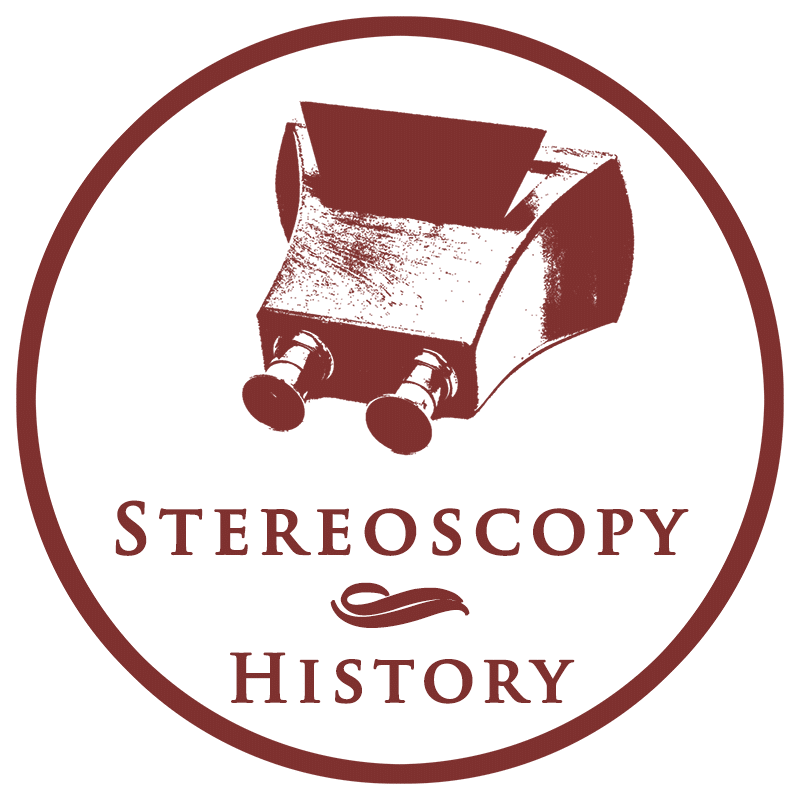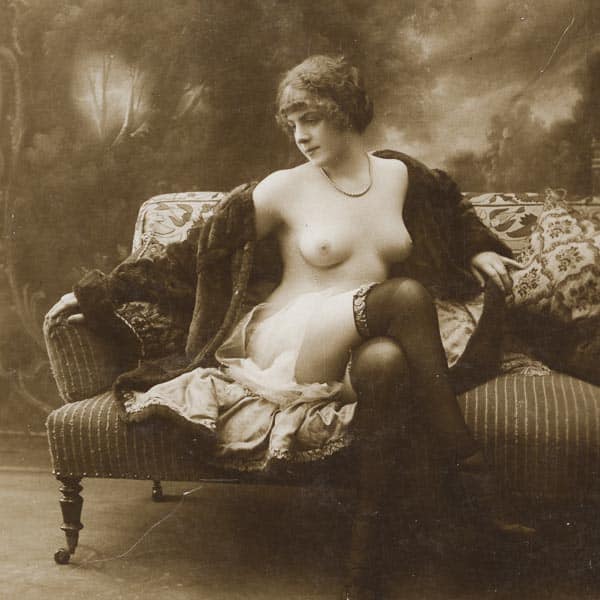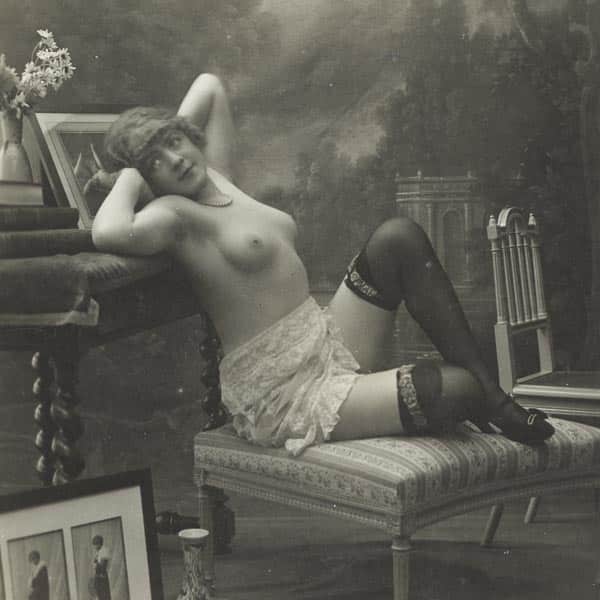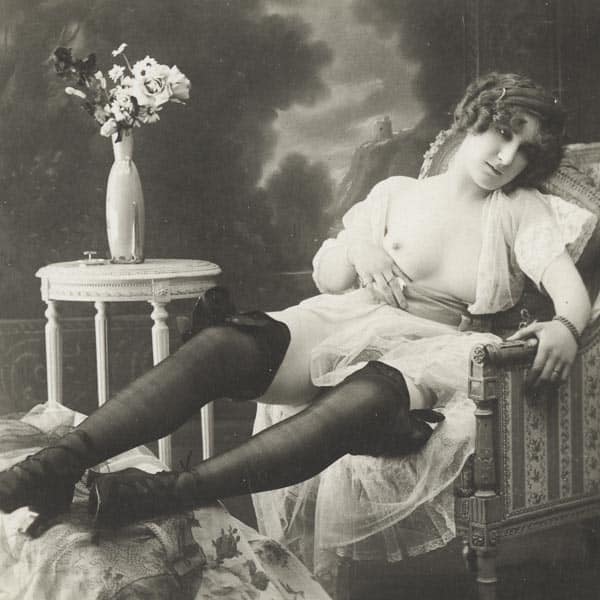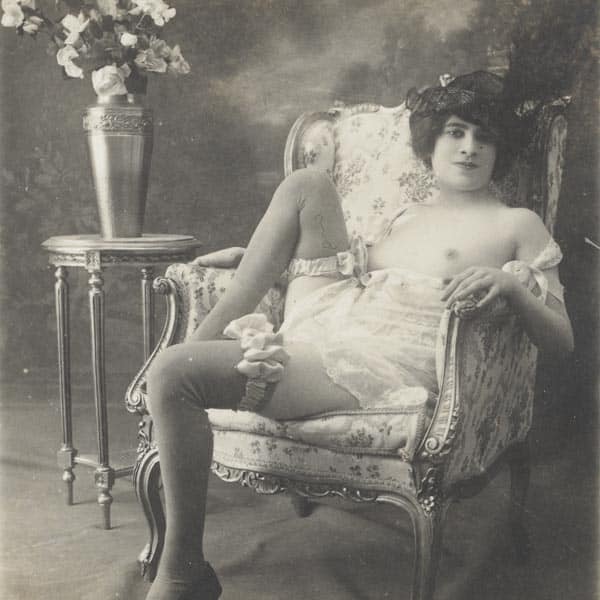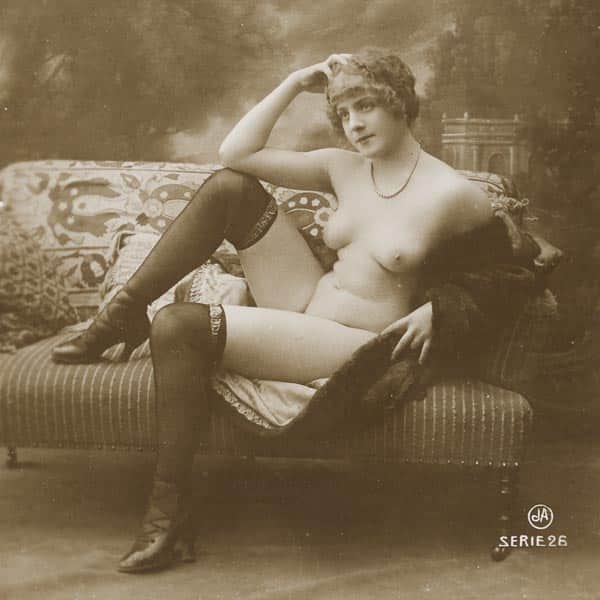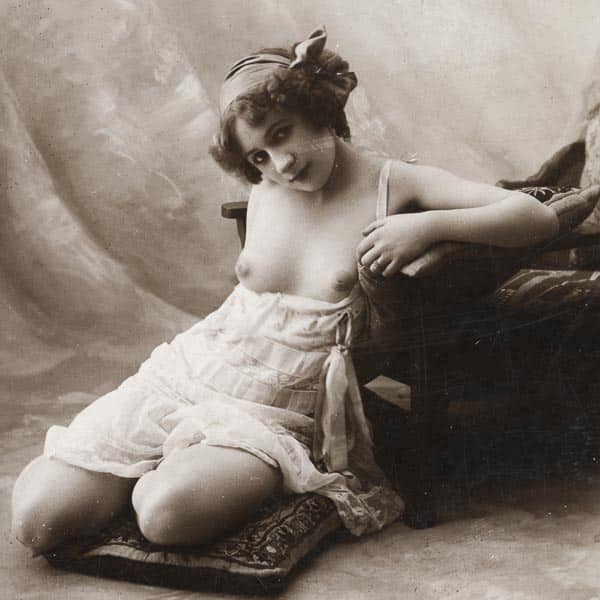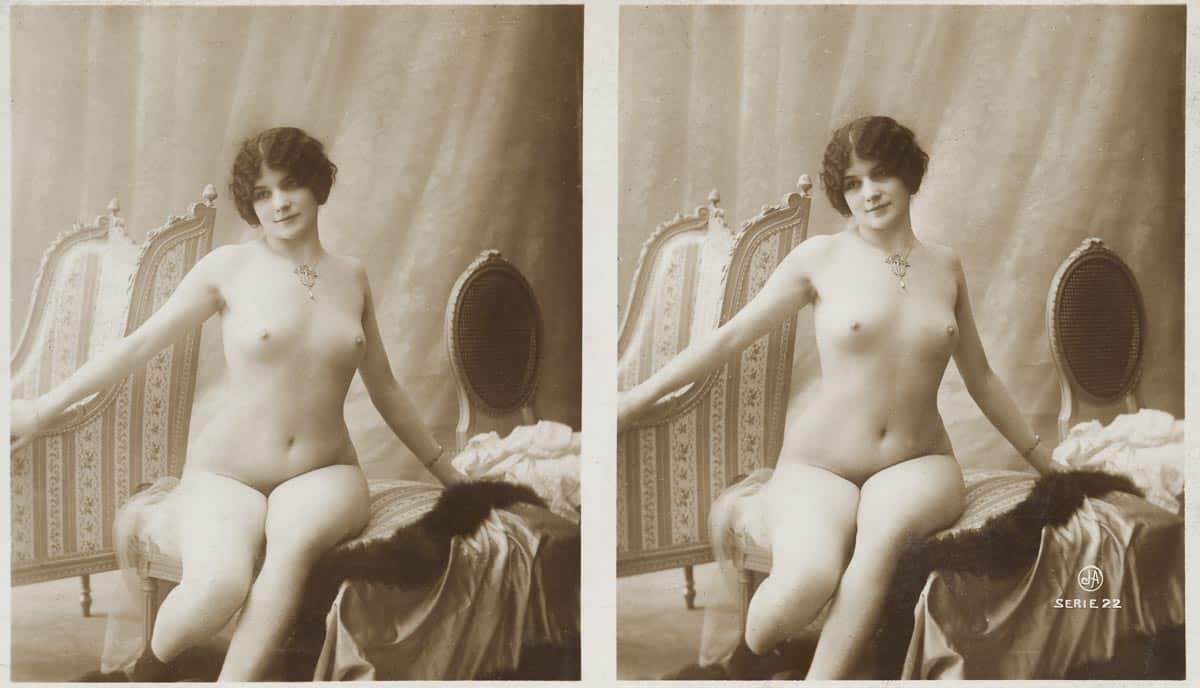
9 x 15 cm paper card stereoview from Série 22
Judging by the range of items offered on online auction sites today, it can be concluded that the erotic stereoviews of Jean Agélou are rarer than his postcards. The early postcards were provided with the initials JA, but later postcards can also have other initials and brands that were used by Agélou’s publishing house, such as GA, Lydia1 and Léo2. The stereoviews have the initials JA and no stereoviews have been found with the other initials of Agélou. It suggests that the stereoviews were published for a shorter period of time, maybe until c. 1914.
The first stereoviews that were made, with some certainty, by Agélou were paper card and glass stereoviews in the 9 x 16 cm format. The stereoviews were made in 1906 and were branded Stéréo-Nu. They were sold individually, or in series of 12 or 25. They also appeared in the magazine Le Stéréo-Nu3.
Later, Agélou published at least 42 numbered series of paper card stereoviews with the initials JA, but there were probably many more. Not all series were numbered, and there are examples of series with different models that share the same number, but which were certainly not sold as one set. It is likely that numbers were reused.
The cards were available in the 8.5 x 17 cm and 9 x 15 cm formats, and were black-and-white or sepia toned. Most stereoviews had a semi-glossy surface, but some had a glossy surface. Like his postcards, the stereoviews were probably sold in series of five or 10. Some images from a session were published as postcards and as paper card stereoviews, indicating that Agélou worked with a conventional camera and a stereo camera during the same session.
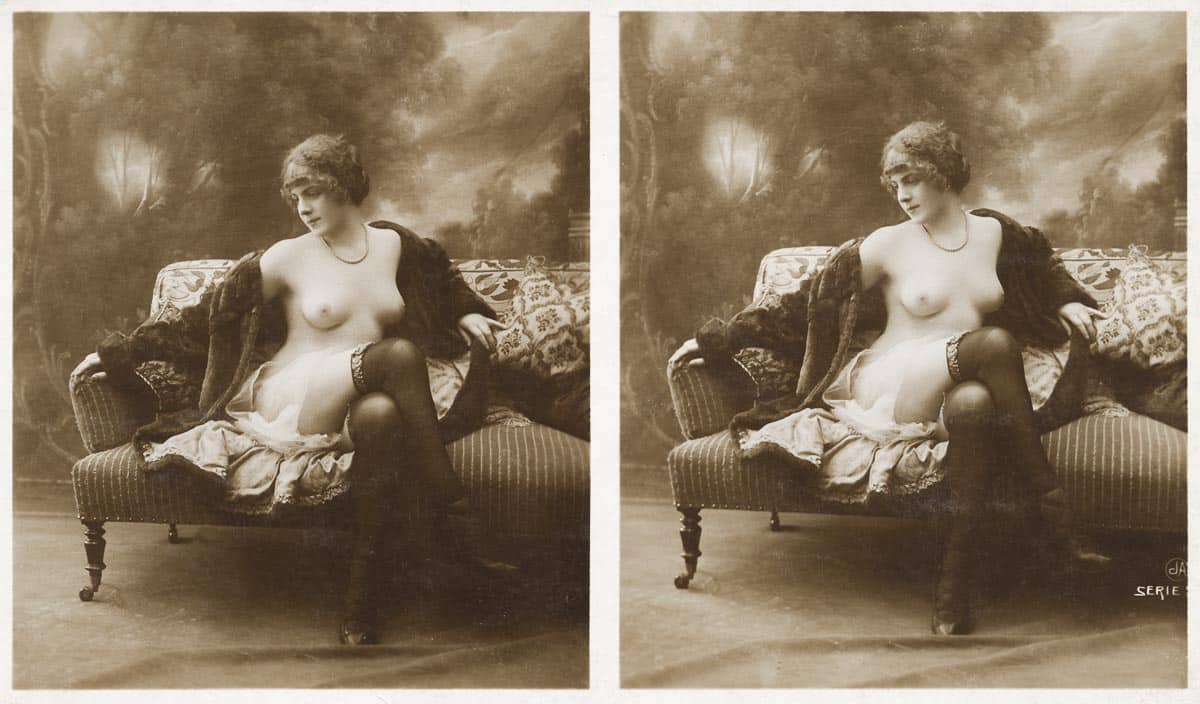
On Agélou’s photos that were published in the magazine L’Étude Académique, the models were usually completely naked and assumed classic poses. Some of these models also appeared in Agélou’s own published series, in which case they often posed semi-nude in lingerie. These photos are more subtle and sensual and the models looked relaxed and seemed at ease with the photographer.
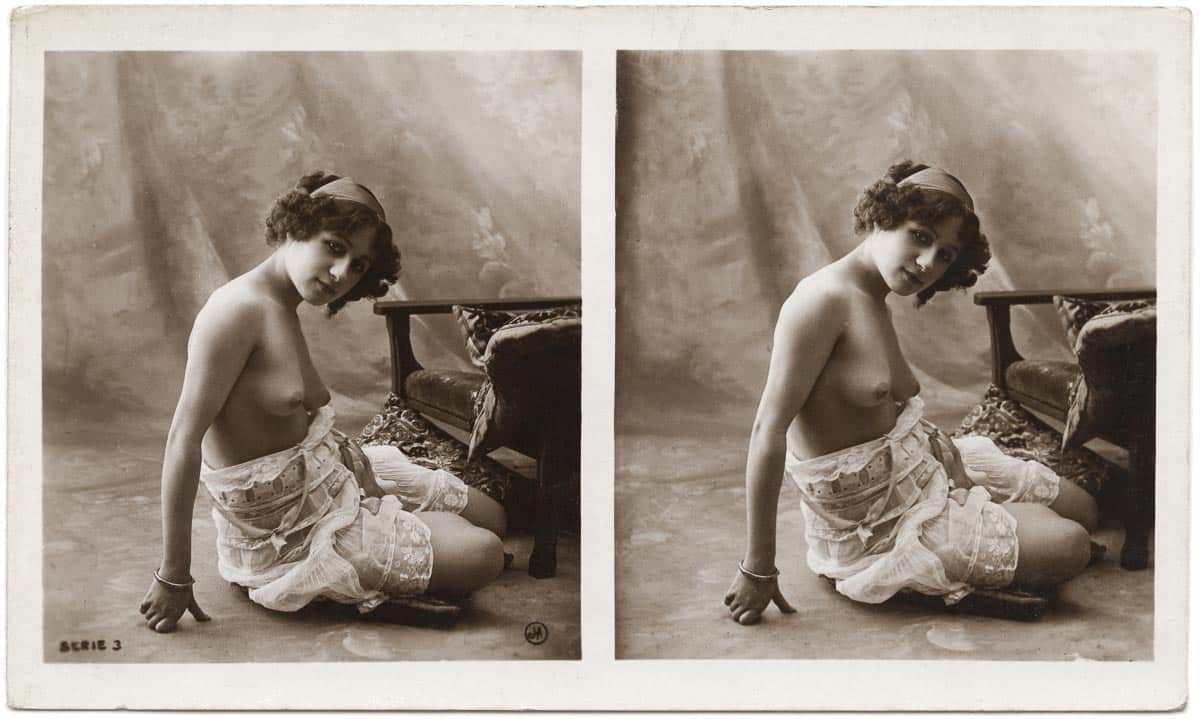
Classification of Agélou stereoviews
Agélou published paper card stereoviews in the formats 8.5 x 17 cm and 9 x 15 cm, with different variations in presentation style. The stereoviews that were undoubtedly published by Agélou contain the initials JA and a serial number, preceded by “SERIE”. Initials and serial number are usually placed one below the other and are visible at the bottom on the right or left image of the stereo pair. In some cases, the initials and serial number are shown separately. The captions are written in white on a dark background or in black on a light background. Some stereoviews do not have initials and a serial number, but these views can sometimes be traced back to Agélou based on the presentation style or the visible interior features of the studio.
A photo shoot with a model could result in the publication of both 8.5 x 17 cm and 9 x 15 cm stereoviews. In this case, both series share the same serial number. This can be useful to identify a missing serial number if the number is present on a stereoview that features the same model, but is published in a different format. There is also a known example where the same serial number is used for two different series with two different models. It is unknown whether this was a mistake or whether one series features two different models.
Classifying the stereoviews based on their presentation style can help to recognise stereoviews with missing (or unreadable) initials and serial numbers as the work of Agélou.
Classification Chart
Type I
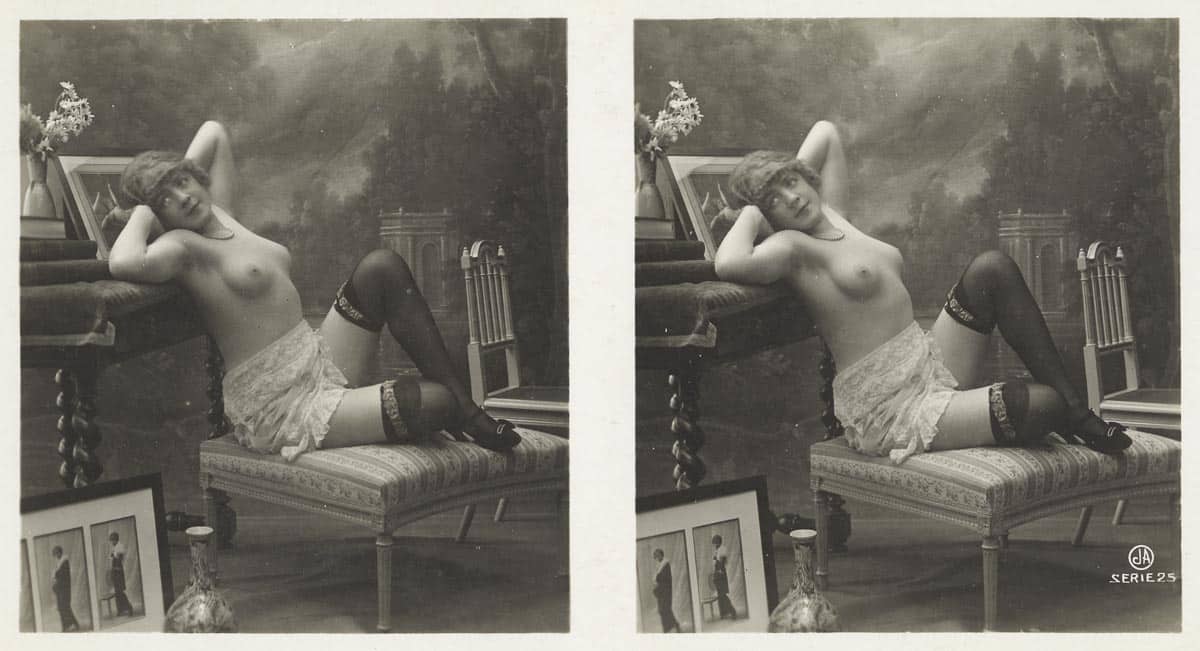
| Overall size: | 8.5 x 17 cm |
| Image size: | c. 6.5 x 7.5 cm |
| Image tone: | Mainly grayscale. Images with a brown/sepia tone exist but are rare. |
| Paper surface: | Semi-gloss |
Type I-A
Type I-A stereoviews have square-sized c. 6.5 x 6.5 cm images instead of the rectangular-sized c. 6.5 x 7.5 cm images of Type I.
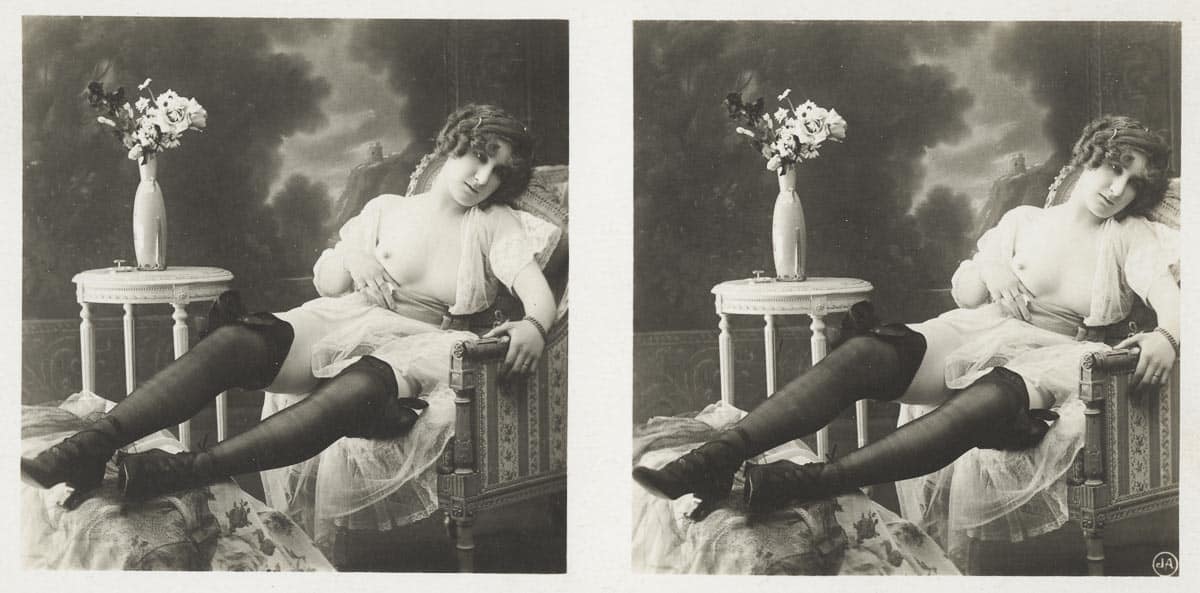
Type II
The Type II stereoviews have a distinctive appearance. The images of the stereo pair have soft borders.
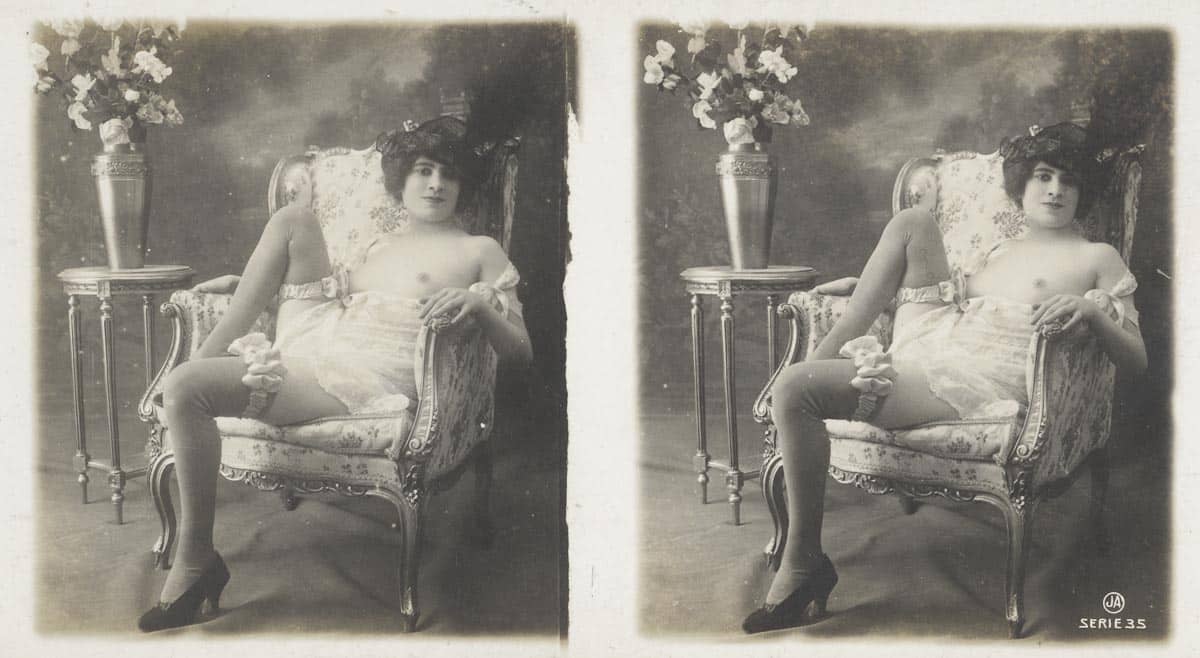
| Overall size: | 8.5 x 17 cm |
| Image size: | c. 6.5 x 7.5 cm with soft borders |
| Image tone: | Grayscale |
| Paper surface: | Semi-gloss |
Type III
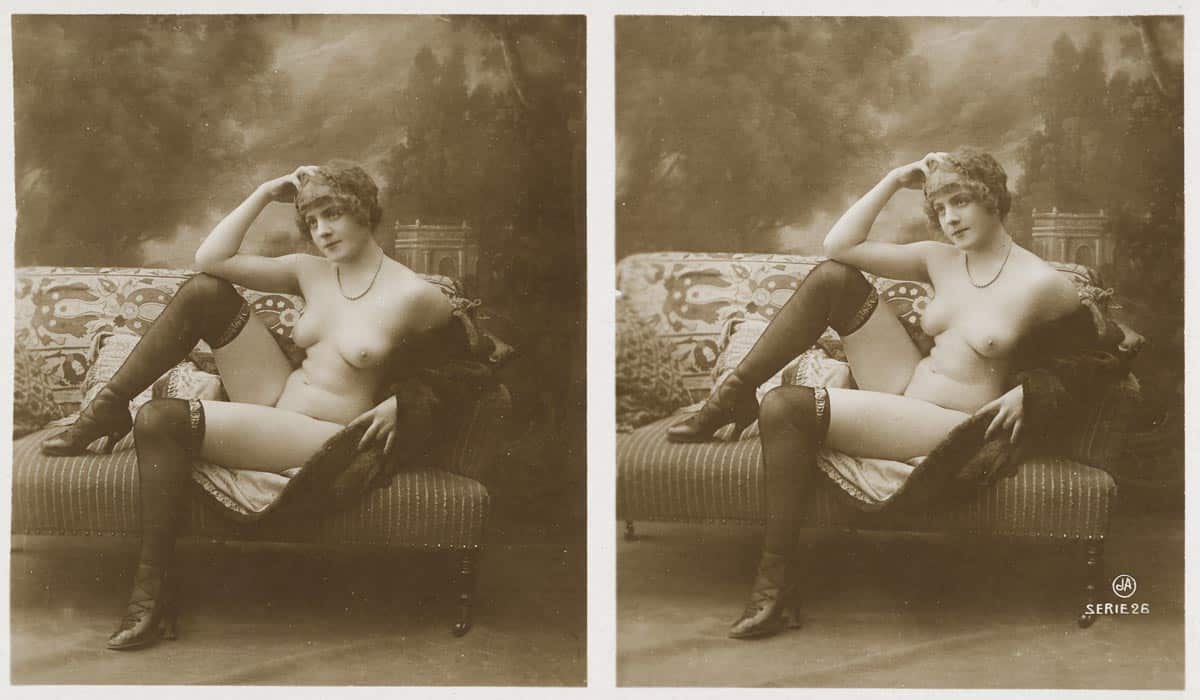
| Overall size: | 9 x 15 cm |
| Image size: | c. 7 x 8 cm |
| Image tone: | Sepia/brown. Grayscale images might exist, but have not yet been found. |
| Paper surface: | Semi-gloss |
Type III-A
The Type III-A cards have a distinctive glossy surface. The glossy paper might have been used only to a limited extent in series with a low number.
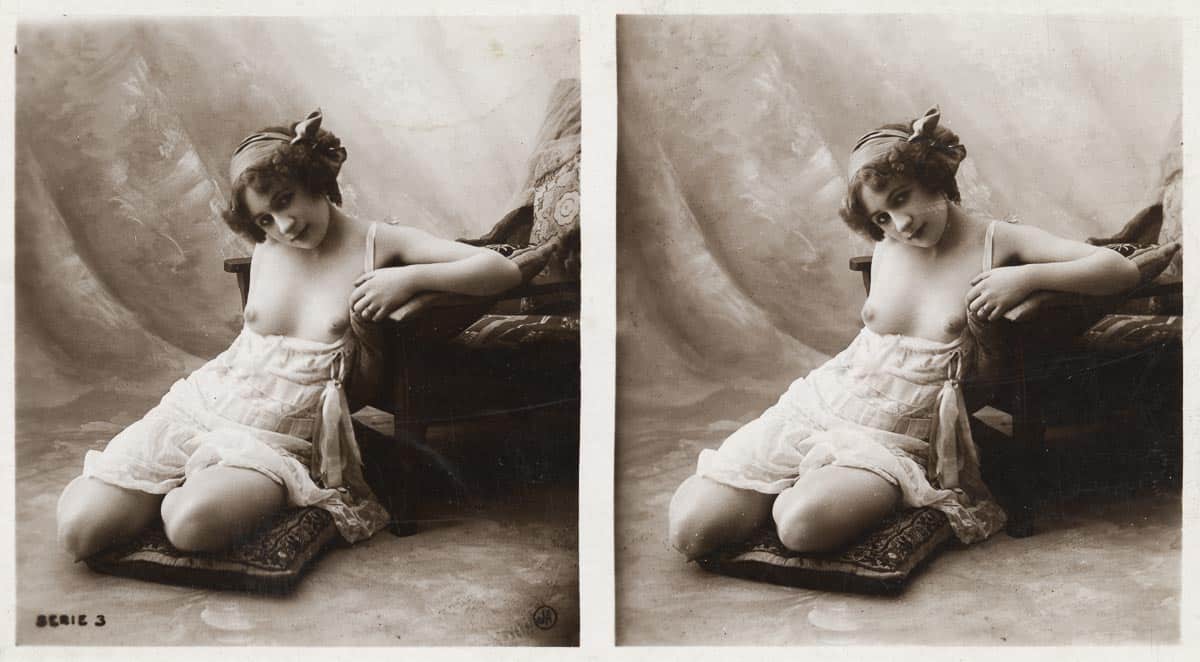
Jean Agélou
Jean Agélou (1878–1921) was a French photographer and publisher of erotic postcards and stereoviews during La Belle Époque. Little is known about his life, and no letters or portraits are known of him. The first nude photos that can be attributed with certainty to him were published in the magazine L’Étude Académique in 1905. The photos that can be linked with certainty to the photographer bear the initials or marks JA, GP, Léo and Lydia. From 1913, postcards were also published with the initials GA, which referred to Jean’s younger brother Georges Agélou (1882–1921) who joined his brother’s publishing company. Jean’s photographs are of a high technical and artistic quality. The decorations and romantic backgrounds create an intimate atmosphere and can today be classified as boudoir photography. Jean and Georges died together in a car accident in Autry-le-Châtel on 2 August 1921.
References
- Annuaire du commerce Didot-Bottin (1921), p. 730. Via: gallica.bnf.fr ↩︎
- Ibid ↩︎
- Bourdon, C. and Agélou, J.B. (2006) Jean Agélou: de l’académisme à la photographie de charme, p. 20. ↩︎
